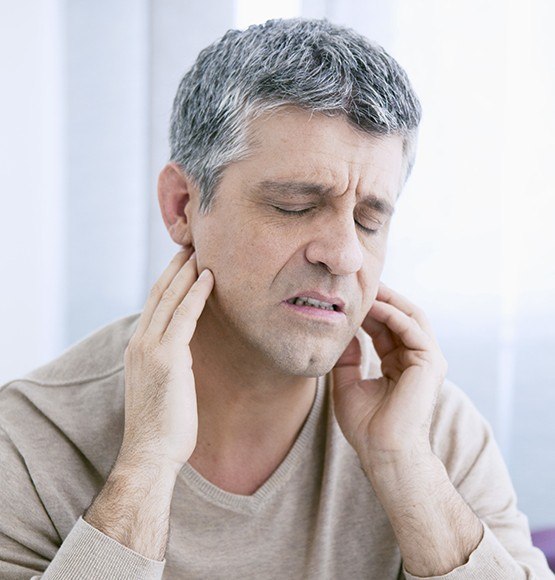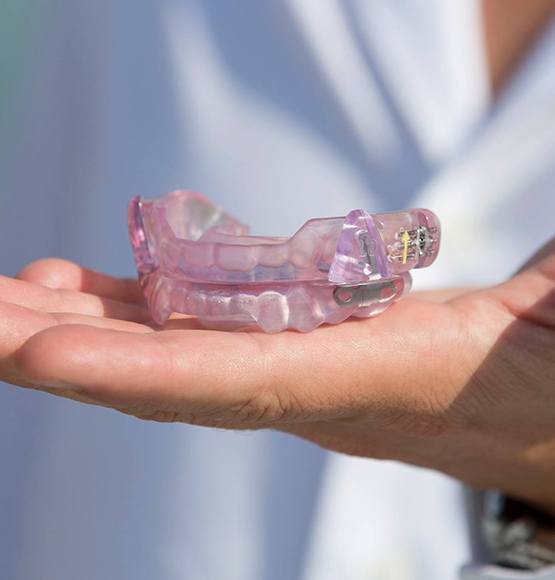TMJ Therapy – Tucson, AZ
Stop Your Chronic Jaw Pain
Your ability to move your arms and legs depends on having healthy, fully functioning joints. Your jaw is no different; it relies on the temporomandibular joint (TMJ) to be able to move fluidly in all directions so that you can speak and chew. Issues with the TMJ can lead to headaches, jaw pain, and other problems. Get in touch with Dr. Lopez today if you think there’s a problem with your jaw joints so that he can help you return to a pain-free life with TMJ therapy in Tucson, AZ.
Why Choose JJay R. Lopez, DDS, PC for TMJ Therapy?
- Dentist That Will Address the Root of Your Problem
- Fully Personalized, Expertly Made Oral Splints
- Multiple Sedation Options for Anxious Patients
What is TMJ/TMD?

When the TMJ becomes strained, injured, or stressed for any reason, the result is a TMJ disorder, or TMD. Risk factors for such a disorder include grinding the teeth at night or an improperly aligned bite. You might also suffer jaw problems after an injury or developing certain types of arthritis. It’s important to have a potential TMD diagnosed and treated as soon as possible so that you can stop the pain and allow your jaw to function normally again.
Equilibration / Occlusal Adjustments

The way your upper and lower rows of teeth fit together affects how the pressure of your bite is distributed. If the two arches don’t come together properly, it could put an uneven amount of stress on the TMJ. During an occlusal adjustment, we can remove small amounts of enamel to reduce the size of certain teeth while using restorations to build others up. The goal is to make sure your upper and lower teeth are perfectly balanced.
Occlusal Splints

An occlusal splint works on two fronts. First, it prevents the teeth from making direct contact with each other, thus limiting the damage done by the bruxism often associated with TMD. Second, it repositions the jaw so that the muscles, ligaments, and nerves in the area are able to relax and recover from the pressure that was previously being put on them. Eventually, your jaw will adapt to its new position, allowing you to find permanent relief from the pain.
